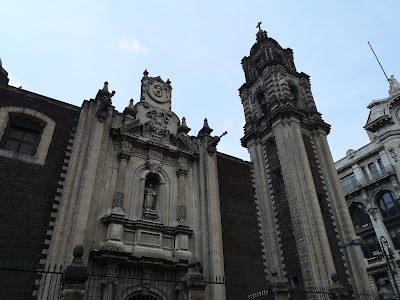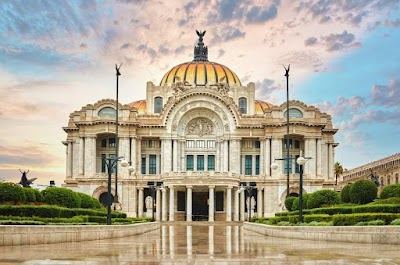Zócalo (Zócalo)
Overview
The Zócalo, officially known as Plaza de la Constitución, is the beating heart of Ciudad de México (Mexico City) and ranks among the largest city squares in the world. Spanning over 240 meters on each side, this grand square serves as a historical, cultural, and social hub where the past and present converge, offering foreign tourists a rich tapestry of experiences and sights.
The history of the Zócalo stretches back to the 14th century when it was the main ceremonial center of the Aztec city of Tenochtitlán. This ancient square was a vibrant space used for rituals, ceremonies, and markets. After the Spanish conquest in the early 16th century, European colonizers restructured the area, making it the center of their newly established capital. The name "Zócalo" itself is derived from the base (zócalo) of an unfinished monument intended to commemorate Mexico's independence. Although the original monument is long gone, the name endures, encapsulating centuries of history.
Dominating the Zócalo is the Metropolitan Cathedral, an imposing structure that took nearly three centuries to complete, from 1573 to 1813. This architectural masterpiece combines Renaissance, Baroque, and Neoclassical styles, reflecting the evolving artistic trends through the ages. Adjacent to the cathedral lies the Templo Mayor, the remnants of the main temple of the Aztec people, offering a fascinating glimpse into the pre-Hispanic era. The nearby Museo del Templo Mayor houses relics and exhibits that delve deep into the Aztec civilization, making it a must-visit for history enthusiasts.
Another prominent feature of the Zócalo is the National Palace (Palacio Nacional), which occupies the entire east side of the square. This historic building serves as the seat of the executive power of the Mexican government and houses the offices of the President of Mexico. Inside, visitors can admire vast murals by Diego Rivera, one of Mexico's most renowned artists, illustrating the country's rich and turbulent history through vibrant and detailed depictions.
Throughout the year, the Zócalo serves as a focal point for various events, festivals, and demonstrations. Among the most spectacular is the annual Día de los Muertos (Day of the Dead) celebration, when the square transforms into a vibrant display of colorful altars, marigold flowers, and traditional decorations. Additionally, the Grito de Dolores, commemorating Mexico's independence on the night of September 15, is ceremoniously performed by the President from the central balcony of the National Palace, drawing massive crowds and creating an electric atmosphere.
Visitors to the Zócalo can savor not only the historical and cultural richness but also the local cuisine. Street vendors and nearby restaurants offer a delectable array of traditional Mexican foods such as tacos, tamales, and elote, providing an authentic taste of local flavors. The vicinity is also filled with shops and markets where tourists can purchase handmade crafts, souvenirs, and various items that reflect Mexico’s vibrant culture.
Interestingly, the Zócalo has seamlessly adapted to modern technological advancements. Free Wi-Fi is available throughout the square, enabling tourists to stay connected and share their experiences online in real time. The expansive open space often hosts concerts, public gatherings, and even ice-skating rinks during the winter season, ensuring there is always something happening in the square.
As visitors walk through the Zócalo, they can sense the square’s pulsating energy, reflecting Mexico’s dynamic blend of ancient traditions and modern life. Whether you are a history buff, a food enthusiast, or simply a curious traveler, the Zócalo offers a comprehensive glimpse into the essence of Mexico City. Always bustling with activity yet steeped in history, the Zócalo stands as an enduring testament to the city’s resilient spirit and cultural wealth.







